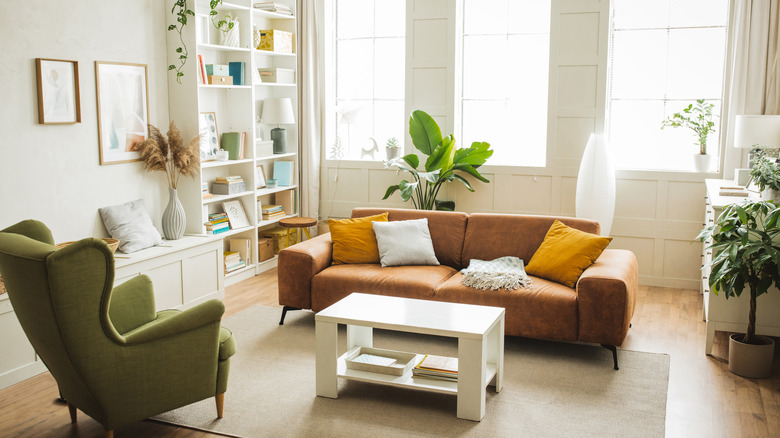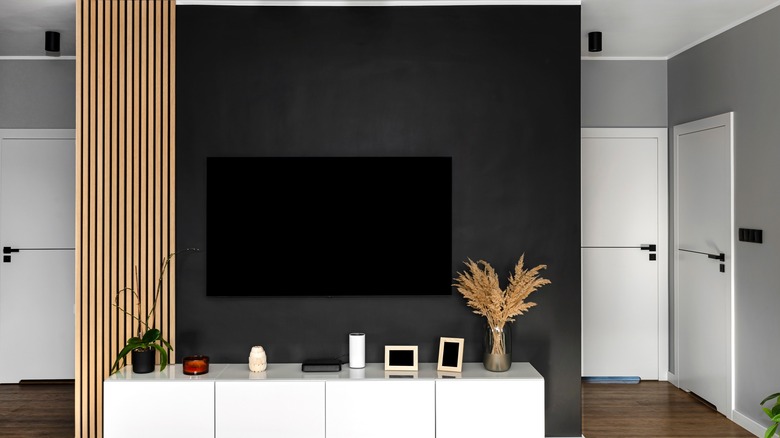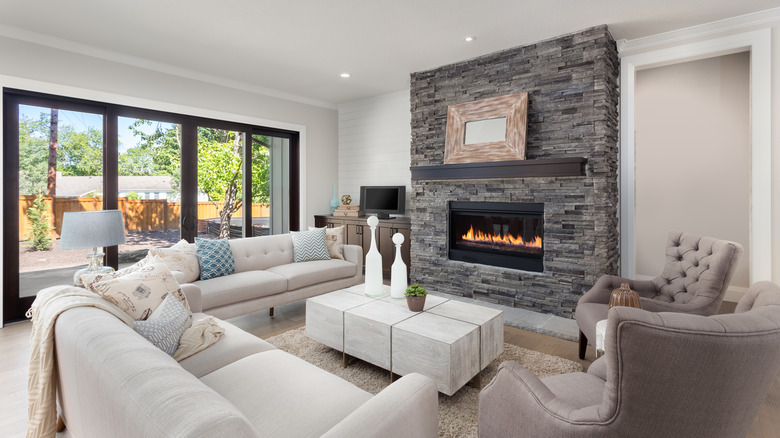Why We Rarely See HGTV Stars Incorporate TVs In Their Home Renovation Designs
For anyone who spends any amount of time watching home decor and renovation shows, there may be a single lingering question at the back of one's mind with each home transformation: Where did they put the television? It's a fair question, given the screen's dominance in many American homes. This key electronic is often conspicuously absent from most room and home reveals, including HGTV's popular "Fixer Upper," where nary a screen has been seen across its many seasons. When posed the question by a viewer in Trib Live, design expert and HGTV host Leanne Ford gave a few good reasons why you may not be seeing any screens, including the unsightliness of the large black box on camera.
While every designer may provide a different answer, there are many reasons for hiding or even foregoing a screen, some of which boil down to aesthetics or personal taste. Other designers have practical reasons for not including it in reveals. You may be looking for reasons and ways to keep your TV from becoming an unwanted focal point in your space, in which case there are a few good tricks to hide or disguise its presence.
Missing and hidden screens
One of the main reasons to forgo a television is quite practical. Leanne Ford cites the ungainliness of a large black screen in front of the camera, where it basically looms as a huge black box that reflects light. While flat screens are much more portable and less cumbersome than the tube TVs that preceded them, they still present a large surface that sometimes glares and reflects things like camera crews and equipment, which you don't want shown on a home renovation show.
Ford goes on to tell Trib Live, "On a personal note, I actually don't love a TV in a room anyway and I always do my best to hide it within the space. I think staring at a piece of art is much lovelier than a big black box." It's an opinion likely popular with many other designers creating rooms where, when present, the television is often carefully hidden. This can manifest in many ways, including discrete cabinet TVs, inconspicuous frame televisions that display art when not in use, and retractable projection screens.
Alternative focal points
Gone too are the days of the television being a singular focal point in spaces like living rooms, where many forgo a television set entirely, opting to put it in a family room, bedroom, or lavish home theater set-up. For many homeowners, the mobility of devices may have also eliminated a need for larger sets, with some people preferring to watch on smaller screens such as laptops, tablets, and phones, particularly in compact spaces like apartments and tiny homes.
While many people still boast large, flat screens, the television is often not the singular focal point of a room, with attention directed to other things such as large artwork, expansive views, or fireplaces. "Though we all love a good TV show, your television doesn't always have to be the focal point of the room," Leanne Ford writes. "Look for other spots in your living space that aren't over your mantle." Ways to camouflage the TV and avoid it drawing the eye include placing it on or in front of a gallery wall or incorporating it as a single element in a large built-in shelving unit that draws the eye as a whole without too much emphasis on the set itself.


